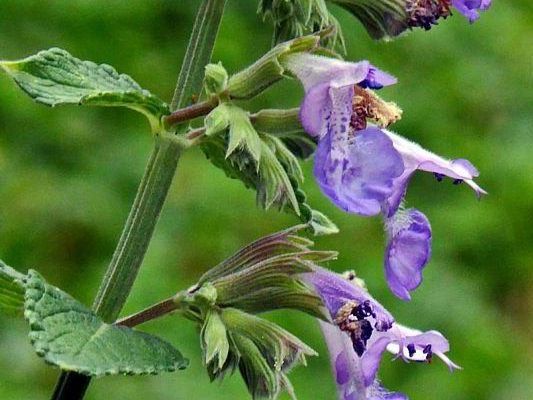Syrian catnip
(Nepeta curviflora)

Description
Nepeta curviflora, commonly known as Syrian catnip, is a herbaceous flowering plant native to the Middle East. It was first described in 1844. Nepeta curviflora is a perennial chamaephyte reaching heights between 60 and 80 cm. The fine, silvery aromatic leaves are small and form in clumps. The leaves are dentate. It will flower between April and June. The flowers are tubular and dark blue, appearing as verticillasters grouped on spikes. The fruit appears as nutlets. Nepeta curviflora is native to the far eastern coastal regions of the Mediterranean, namely Israel, Palestine, Lebanon and Syria. It inhabits Phrygana and Mediterranean woodlands, notably within the montane regions of Mount Hermon. Nepeta curviflora is occasionally seen in Horticulture, where it is sometimes mistaken with the similar appearing Nepeta italica. The two are differentiated by their flower colors, with N. italica presenting white while N. curviflora appears blue. Nepeta is a genus of flowering plants in the family Lamiaceae. The genus name is reportedly in reference to Nepete, an ancient Etruscan city. There are about 250 species. The genus is native to Europe, Asia, and Africa, and has also naturalized in North America. Some members of this group are known as catnip or catmint because of their effect on house cats the nepetalactone contained in some Nepeta species binds to the olfactory receptors of cats, typically resulting in temporary euphoria. Most of the species are herbaceous perennial plants, but some are annuals. They have sturdy stems with opposite heart-shaped, green to gray-green leaves. Nepeta plants are usually aromatic in foliage and flowers. The tubular flowers can be lavender, blue, white, pink, or lilac, and spotted with tiny lavender-purple dots. The flowers are located in verticillasters grouped on spikes; or the verticillasters are arranged in opposite cymes, racemes, or panicles toward the tip of the stems. The calyx is tubular or campanulate, they are slightly curved or straight, and the limbs are often 2-lipped with five teeth. The lower lip is larger, with 3-lobes, and the middle lobe is the largest. The flowers have 4 hairless stamens that are nearly parallel, and they ascend under the upper lip of the corolla. Two stamen are longer and stamens of pistillate flowers are rudimentary. The style protrudes outside of the mouth of the flowers. The fruits are nutlets, which are oblong-ovoid, ellipsoid, ovoid, or obovoid in shape.
Taxonomic tree:







